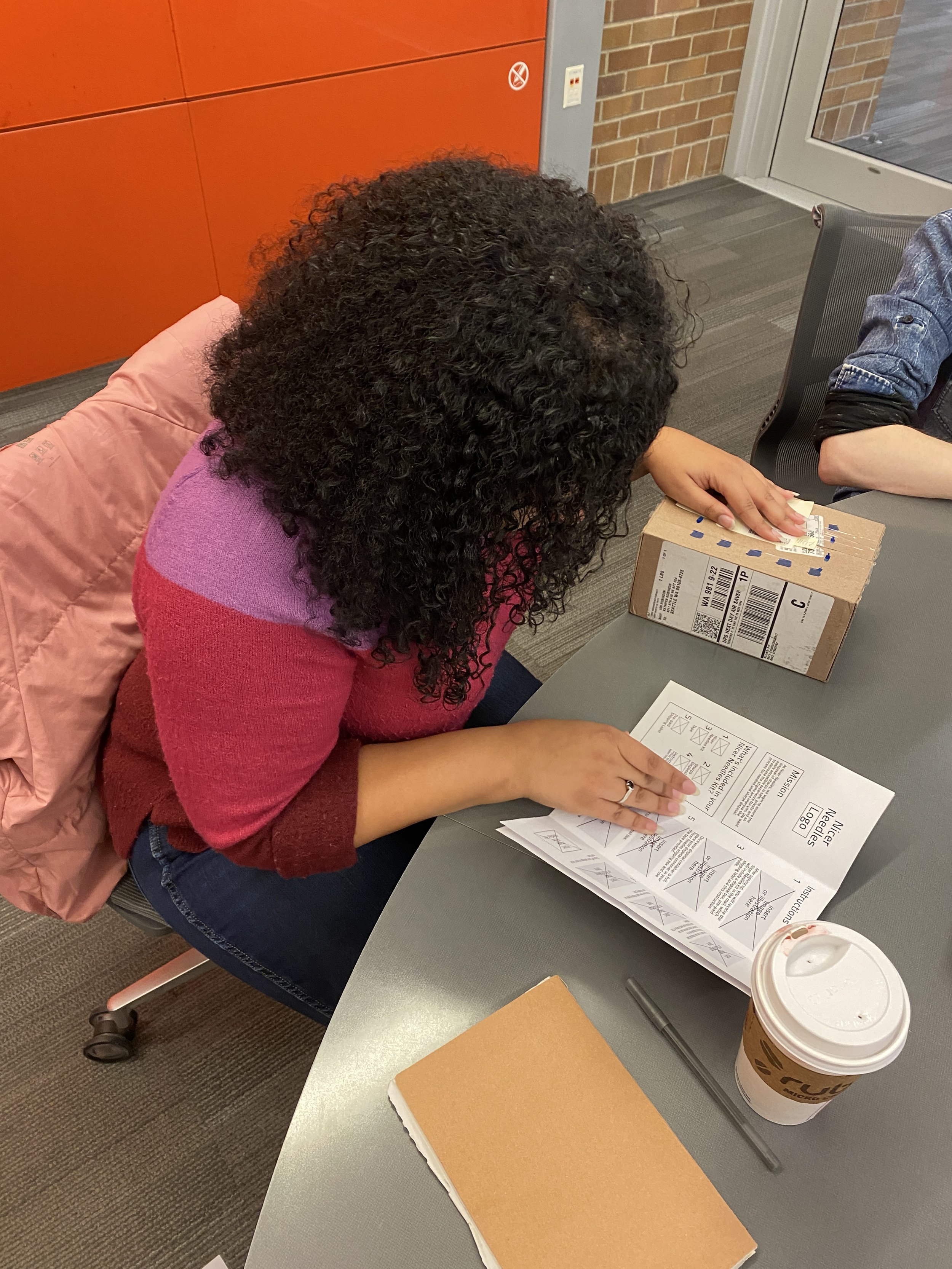Nicer Needles
Project Overview:
Patients who generate used medical sharps (such epipens, insulin, or hormones) experience many pain points when trying to dispose of their used medication.
Our team was eager to understand the difficulties users faced, and worked to eliminate the discomfort and stigma surrounding the domestic disposal of otherwise life-affirming medication.
After conducting qualitative research methods and ideation sessions, our team developed and tested a mail-in prototype solution that was met with delight by primary users.
Research/ Design Questions:
What barriers and pain points exist in the process of needles or sharps medication disposal?
How might we make the process of disposing of needles or sharps easier?
Role:
UX Researcher
Team:
Project Manager: Carolyn Chen
UX Strategist: Kalei Musell
UX Designer: Maza Hailu
UX Researcher: Flynn Robinson
Timeline:
10 Weeks
(1 University of Washington course)
Design Process:
Research:
Special care was taken to choose research methods that respected users’ privacy, but maximized our understanding from their POV.
Research Methods:
Survey - Online survey focused on validating the design problem and understand the diversity in methods users take to dispose of their medication. (15 Responses)
Interview - One on one interviews with primary users to gather in depth understanding of the problem. (3 Primary Users)
Try It Yourself - Team members visited sharps disposal sites to understand the problem from the users view point. (3 Site Visits)
Research Findings:
Current drop-off sites are uncomfortable & difficult for users to visit and reinforce the stigma users experience.
This discomfort leads users to create preferred disposal habits and have uncertainty in other disposal methods
Sharps disposal tied to medicine or identity is a deeply personal experience and frequency of disposal depends upon the specific user.
User Personas:
Research from surveys and interviews pointed to three broad archetypes of users between low, medium, and high sharps generation, as well as primary / secondary use case types for interaction with disposal.
Riley (Primary)
Riley is a communications technician living in Seattle taking HRT via bi-weekly intramuscular injections.
Taylor (Primary)
Taylor is diagnosed with Type I diabetes, and is required to inject insulin several times per day.
Pat (Secondary)
Pat is the parent of a young child that has an epipen prescription due to a severe peanut allergy.
Ideation:
After synthesizing the research into clear pain points users experience to address, our team ideated in several brainstorm sessions to focus our solution on addressing the users’ needs, expected impact, and project feasibility.
Brainstorming & Sketches:
Solutions were determined by how much each one aligned with our original design questions surrounding increasing safety, privacy, and accessibility for needles/sharps users. We discovered several ideas could work in tandem to address the requirements users expressed in research, such as accessibility and convenience.
Task & User Flows
Task & User Flows were created to visualize the steps users would take to preform our product’s tasks.
Storyboarding:
From the flows, storyboards were created to further visualize the journey users would experience.
Prototyping & Testing
To meet the needs of users and let them dispose of their used medical sharps in a safe, private, and accessible way - our solution focused on a disposal kit that users could contain, package, and return their sharps via mail or by pharmacy.
Brochure Prototyping
Throughout the design journey, we crafted multiple prototypes to increase clarity and the conciseness of the program’s instructional brochure. Several versions were tested and iterated upon based on feedback during testing with primary users & usability testing participants.
Nicer Needles Kit:
The Nicer Needles Kit prototype included:
Sharps container approved by the FDA
Instructional brochure
Adhesive strip for resealing & mailing
Prepaid shipping label (if acquired by-mail)
Shipping box
Usability Testing:
Usability testing was conducted with four participants and focused on improving the overall prototype kit design and instructional content.
Participants preferred content when given as a brochure over alternatives.
Participants had trouble following the original instructional layout and needed revising.
Original instructions were otherwise clear and allowed participants otherwise unfamiliar with sharps disposal or the USPS system to prepare the package for mailing.
Key insights gained included:
Iterations:
Feedback was routinely incorporated and multiple iterations were produced, you can view the different stages the instructional brochure took in this Figma link.
Mid Fidelity Kit Prototype
Updated kit prototype incorporated team branding and instructional brochure revisions.
Final Brochure Prototype
Branding and improved instructional layout & content were applied from usability testing insights.
Video Solution:
The video to the right showcases our service design solution, guiding the viewer through the product’s life cycle in a fun & informative way.
Final Considerations:
Takeaways:
Projects relating to health are highly personal and require advanced discretion, but the challenge of navigating that space was rewarded through a genuine and deep understanding our users.
Designing in a physical space was not without its own difficulties, but I found the rapid physical prototyping sessions a joy to work on while iterating for a solution.
I had a blast working with the team, and could not have produced a solution like we did without their help.
Moving Forward:
The pharmacy touch point could use additional refinement to provide a more seamless experience for the user.
The online portal could use to be further finalized to eliminate lose ends in the user flow.
Additional work could be done around kit size for different users, or insight to which additional languages work should focus in to maximize user coverage in the King County metro area.
The Nicer Needles concept was created by a team of graduate students at the University of Washington as a part of the User Centered Design curriculum for HCDE 518 in Autumn 2023.



















